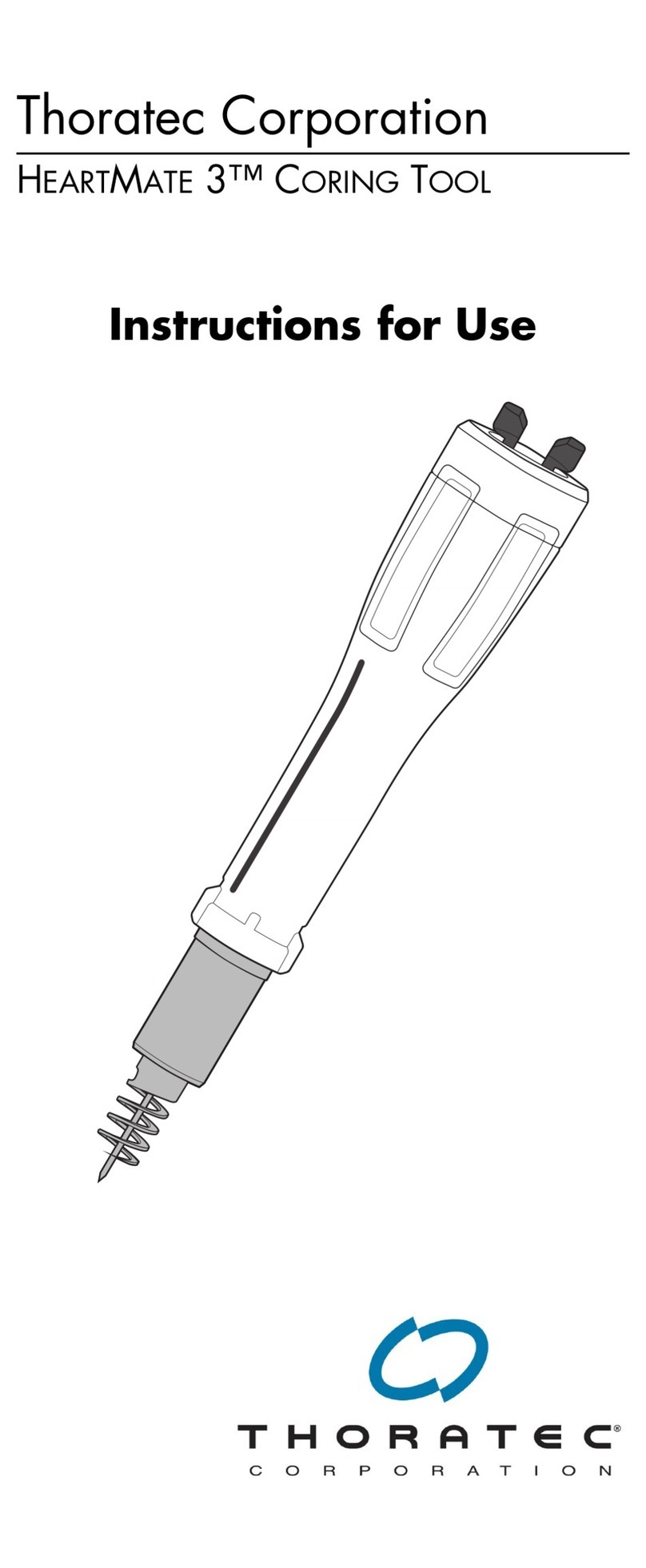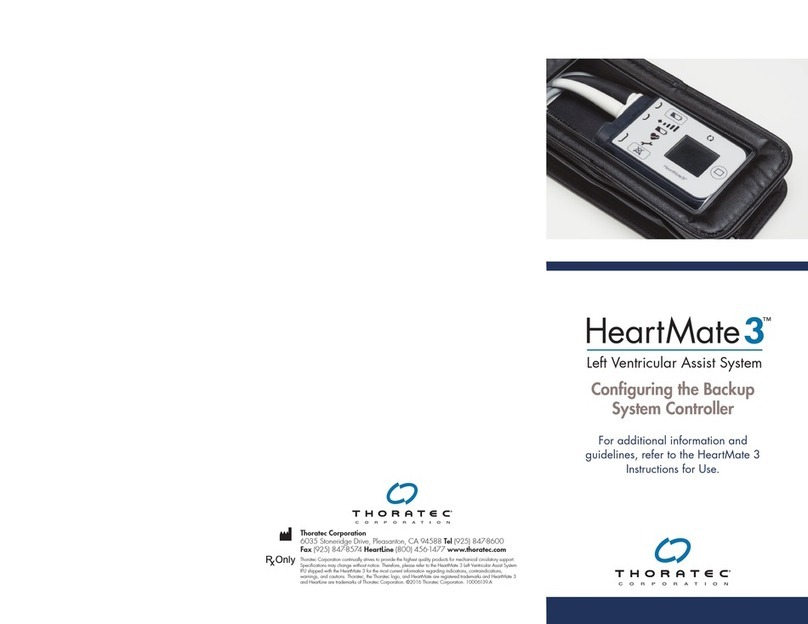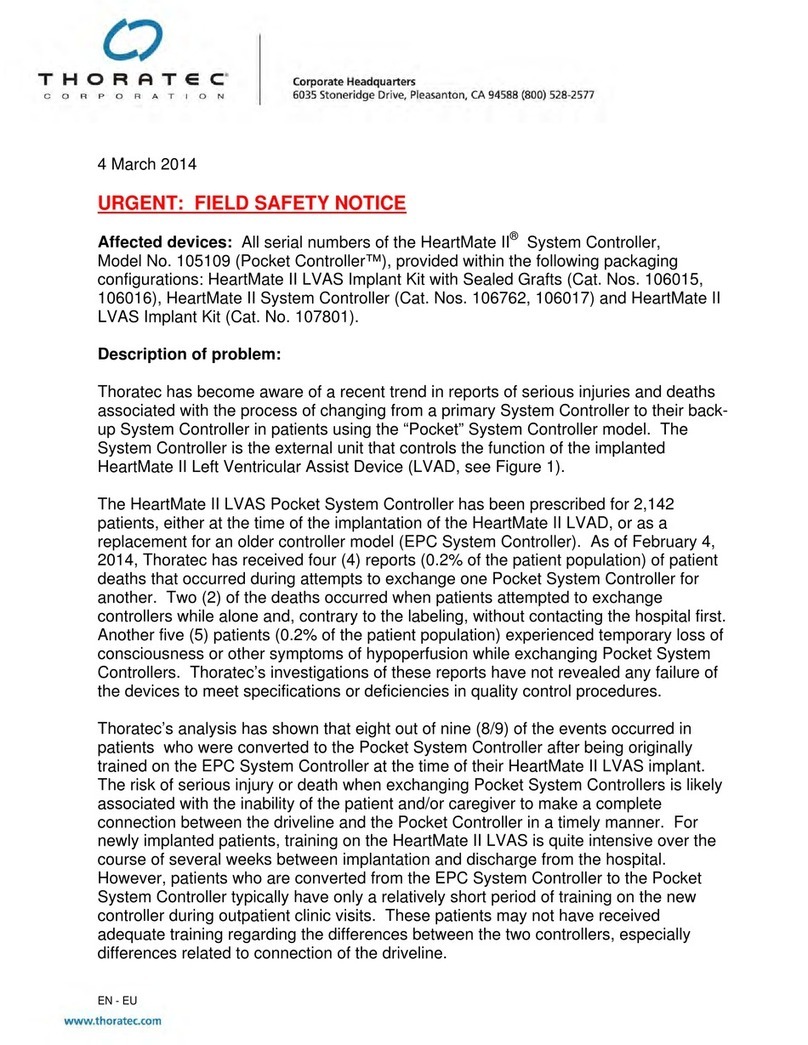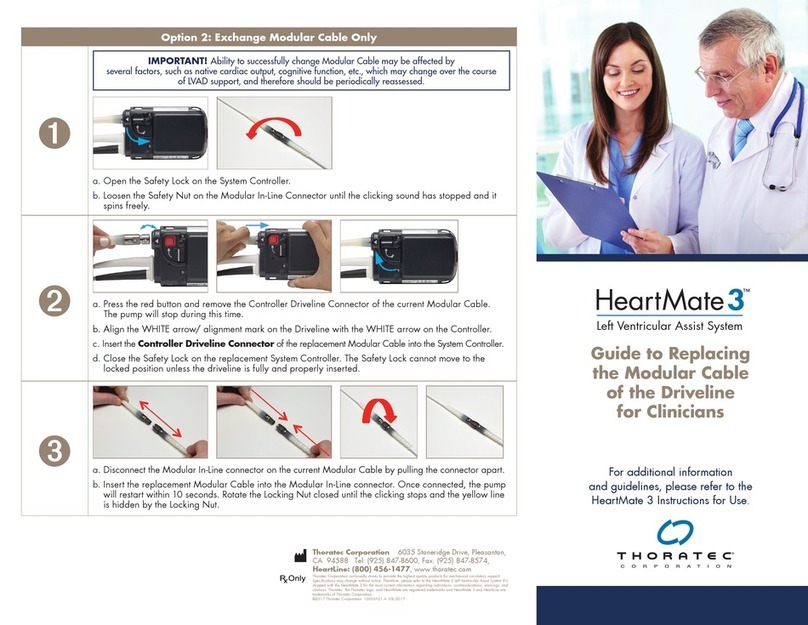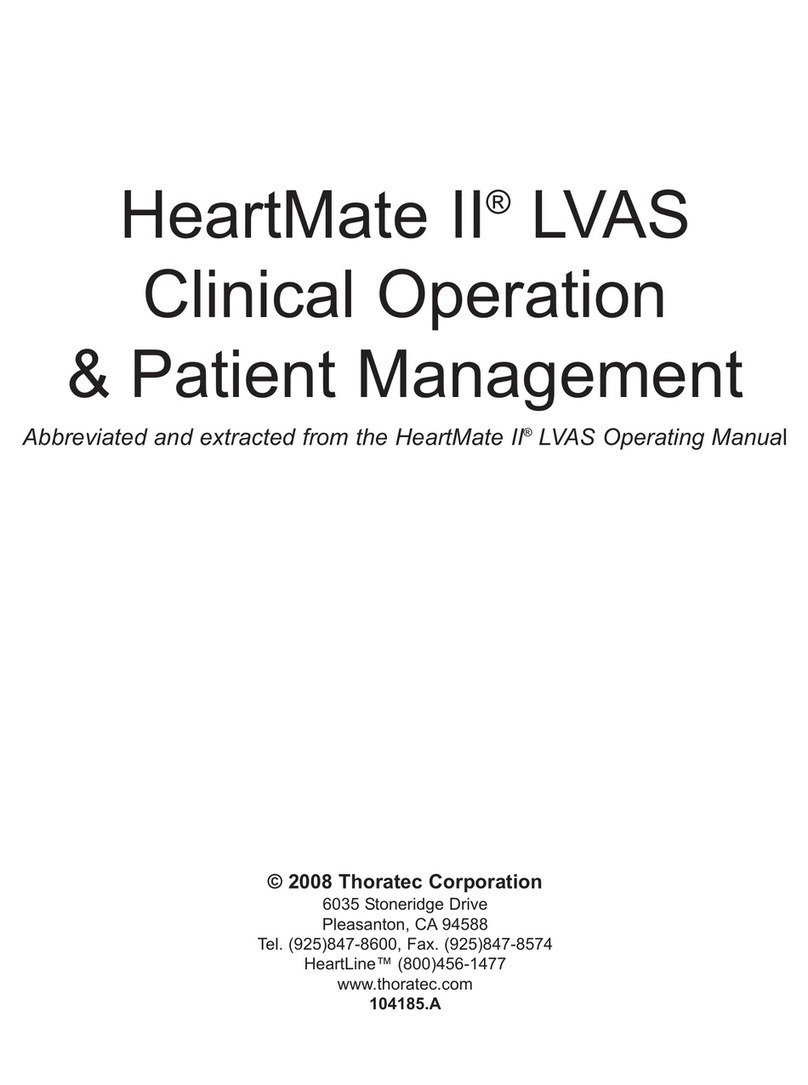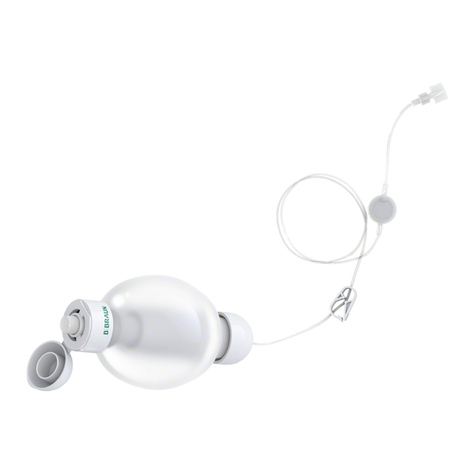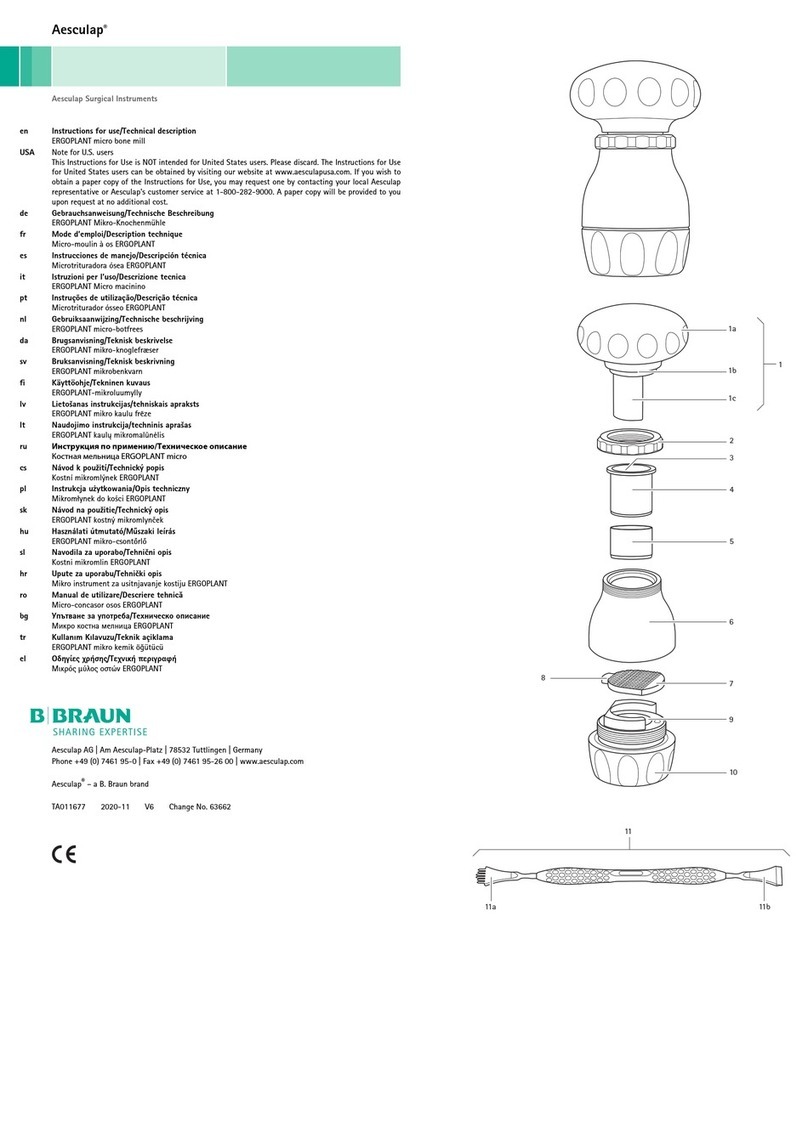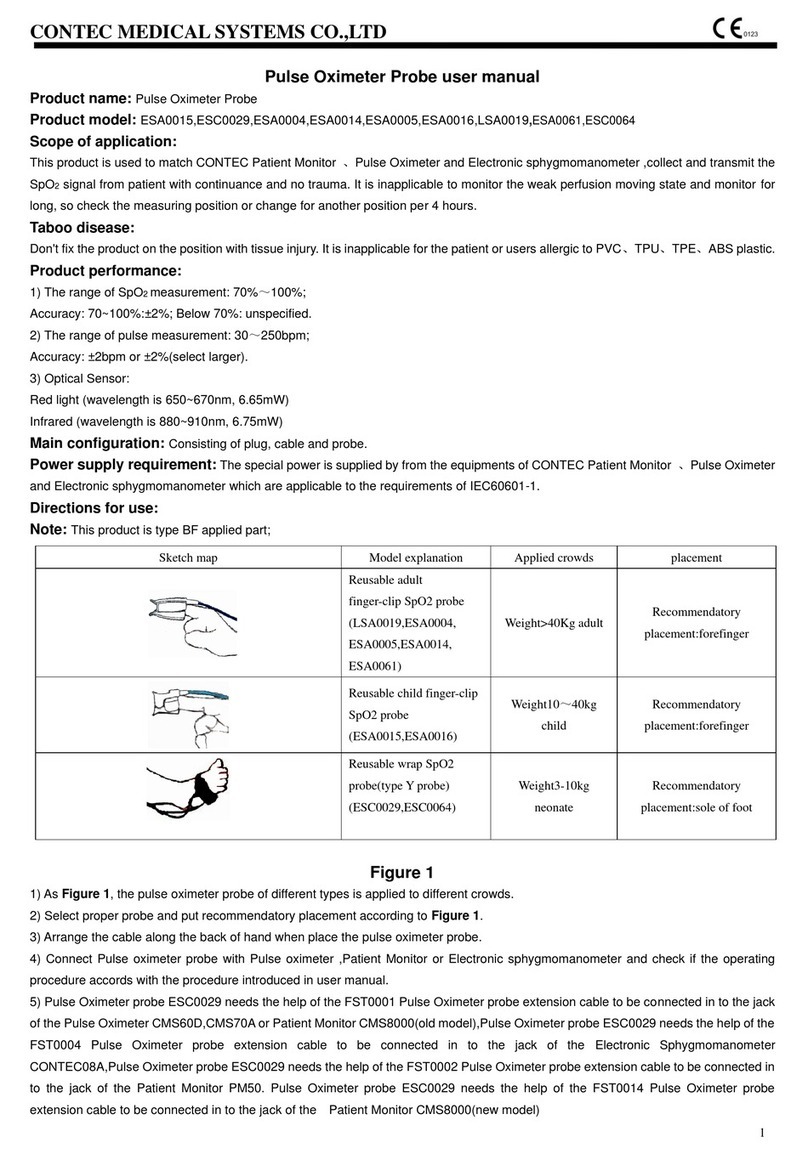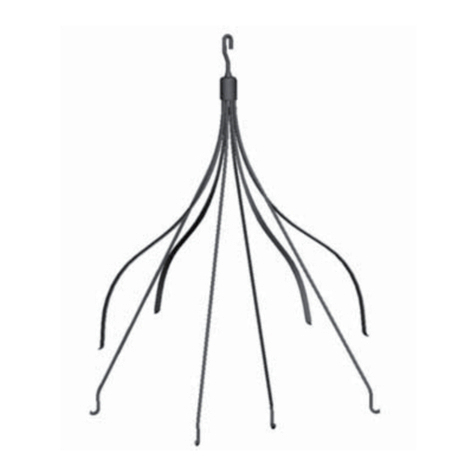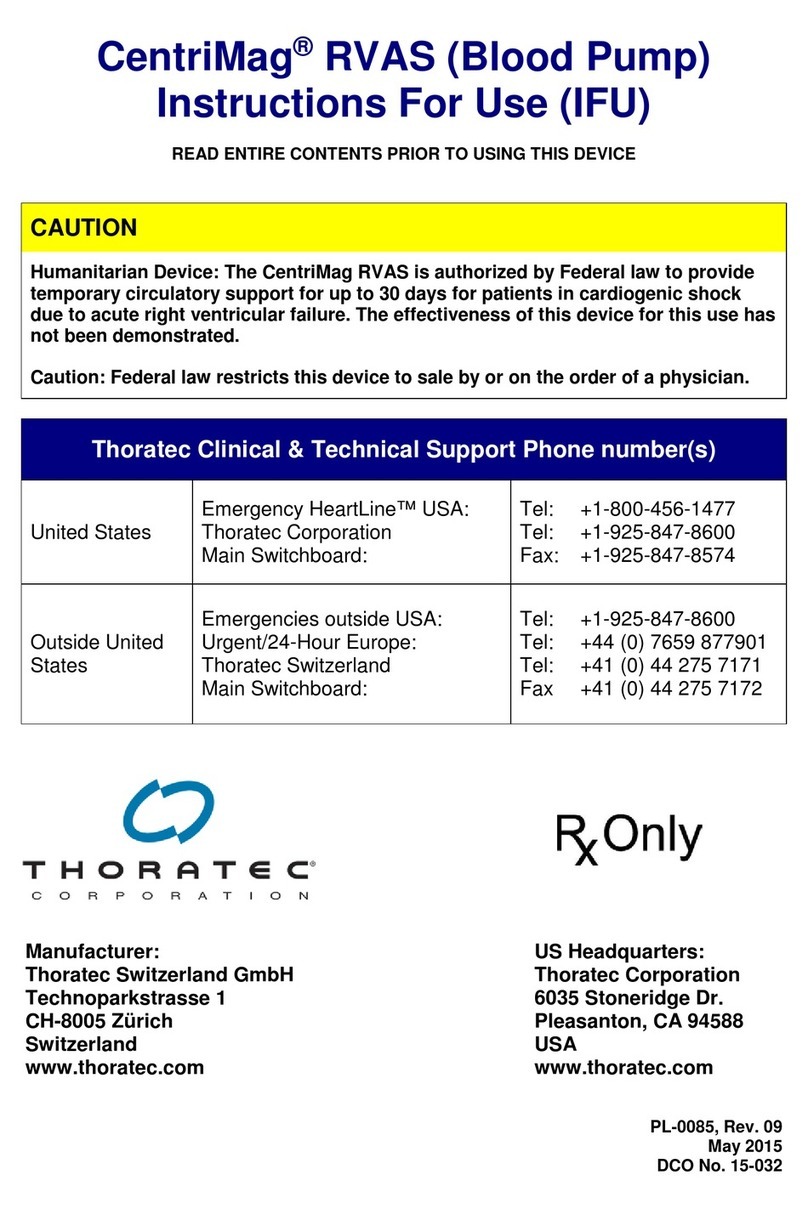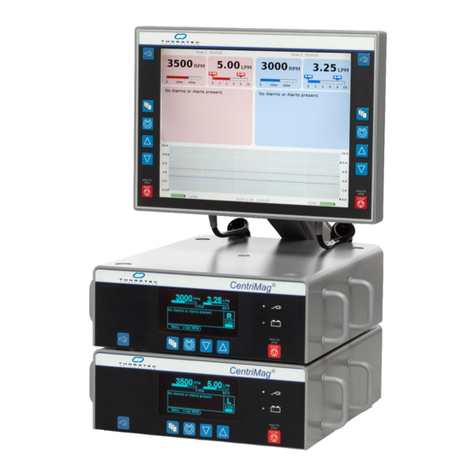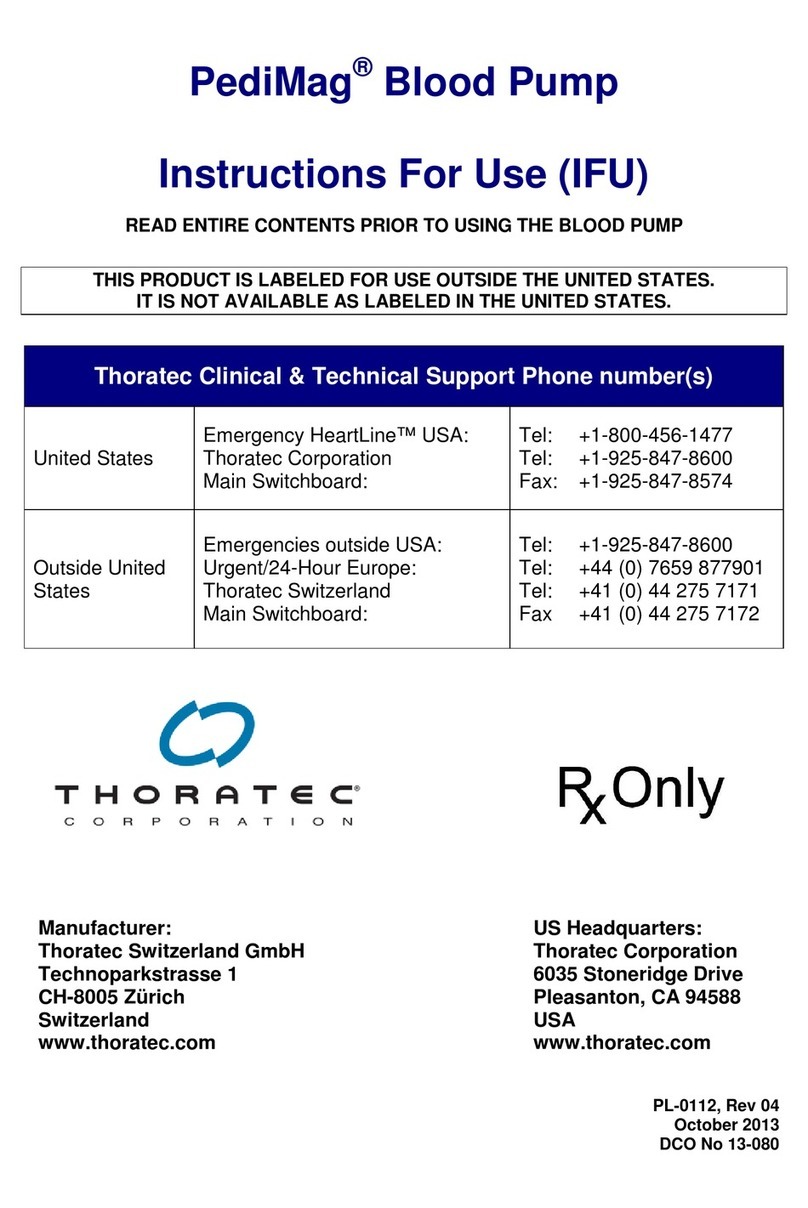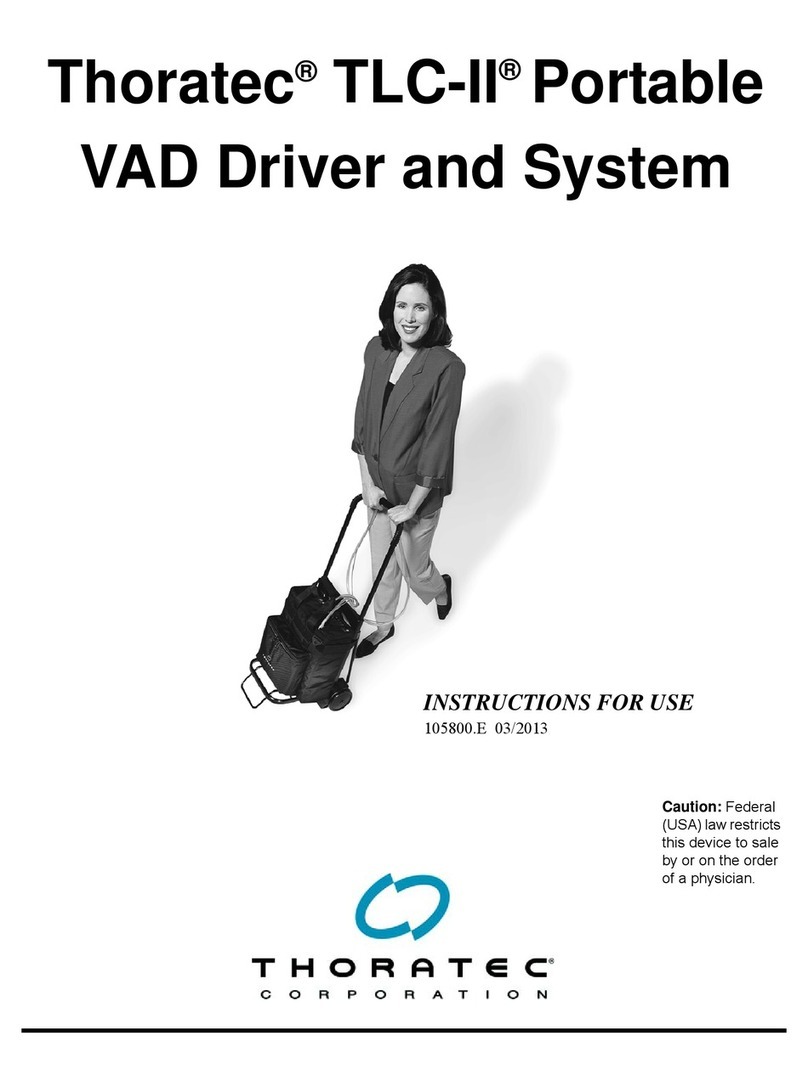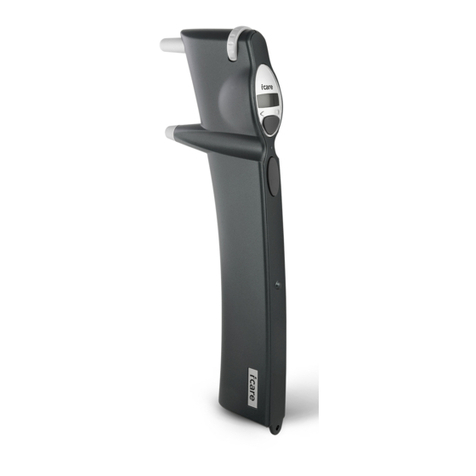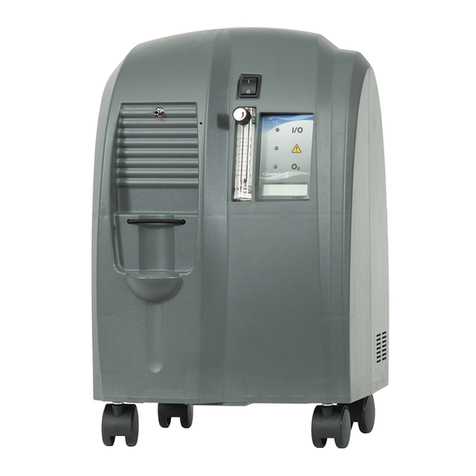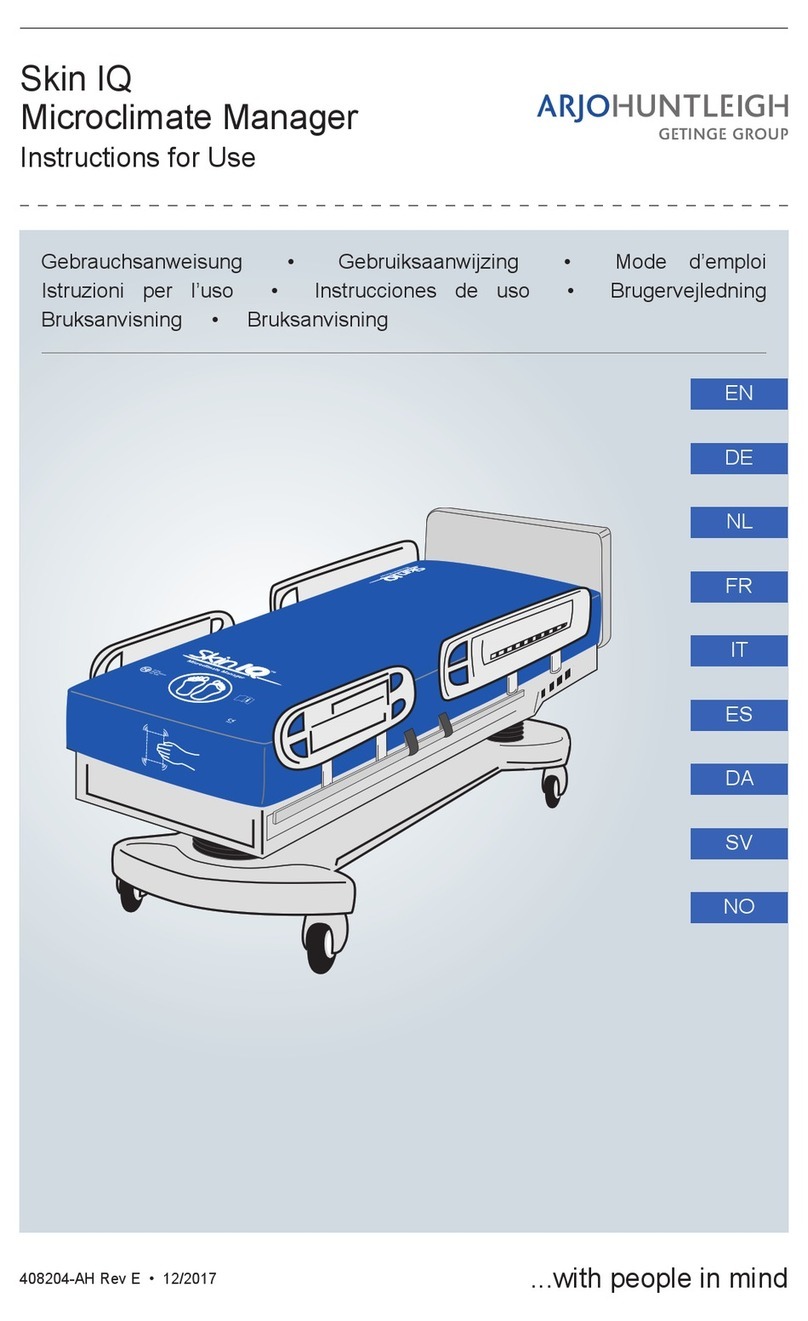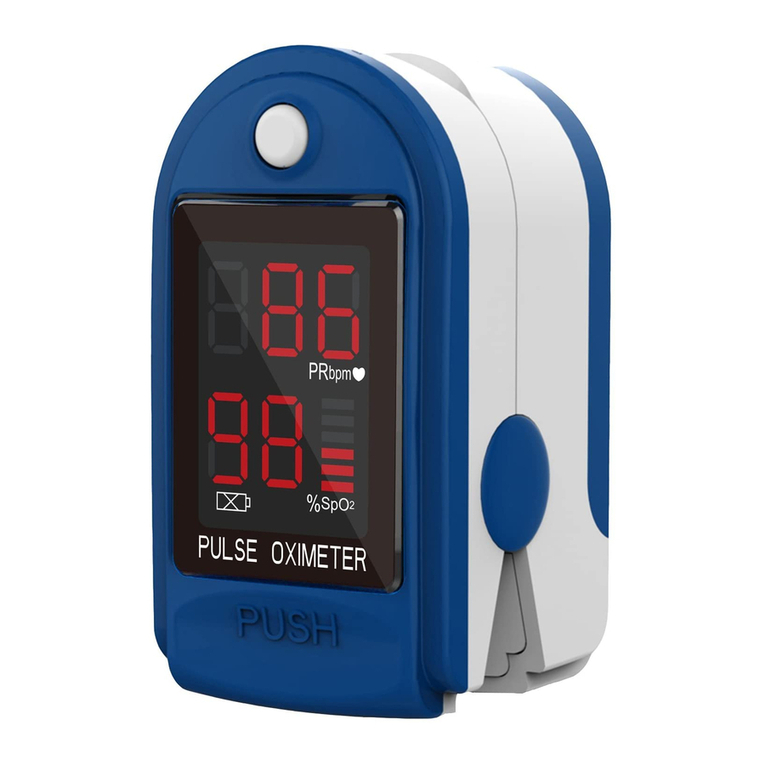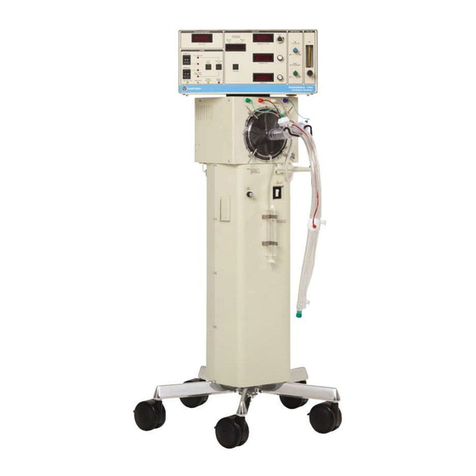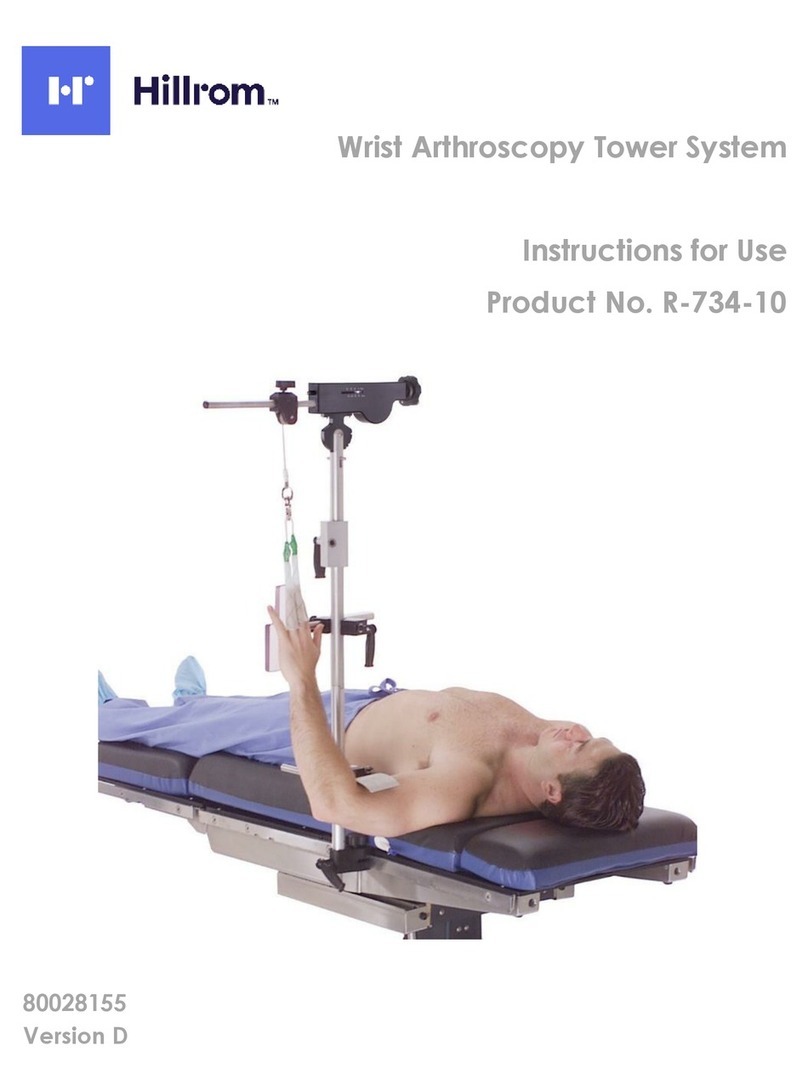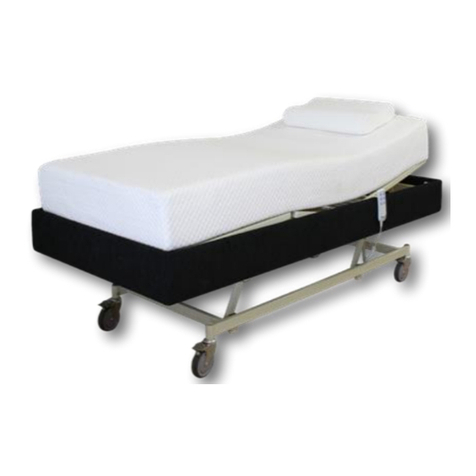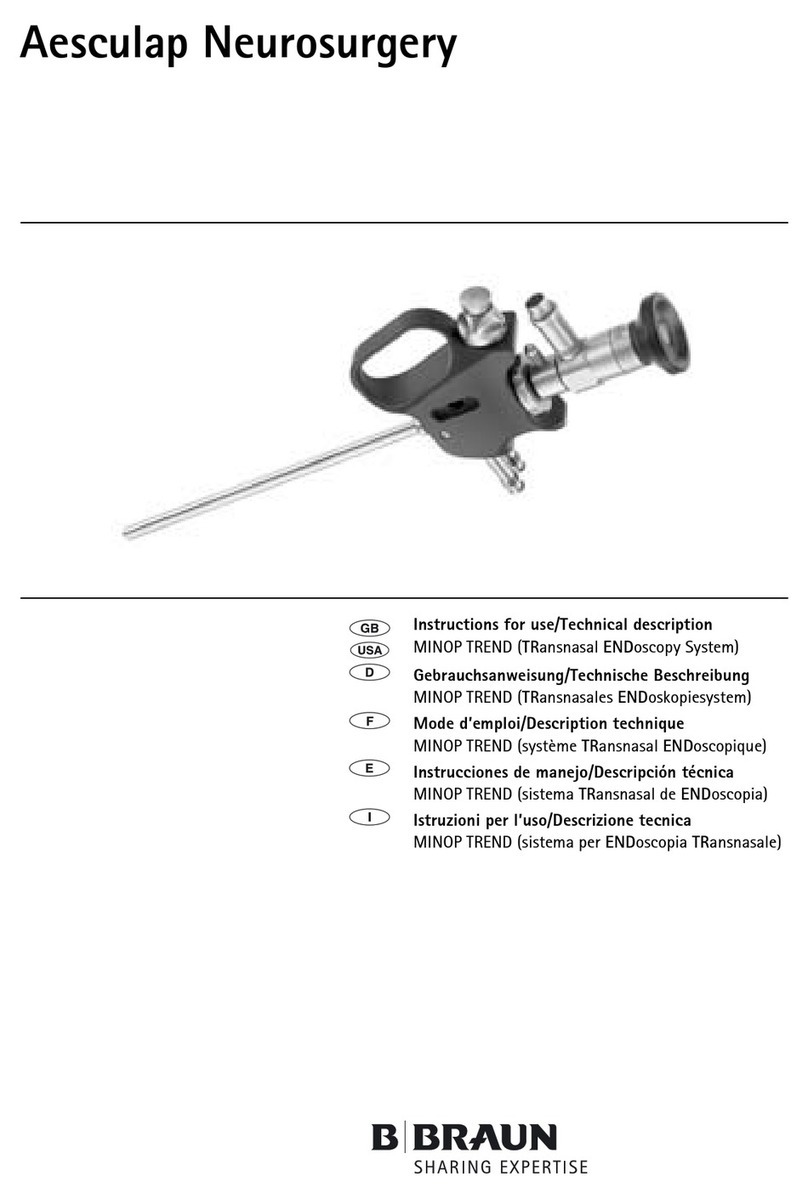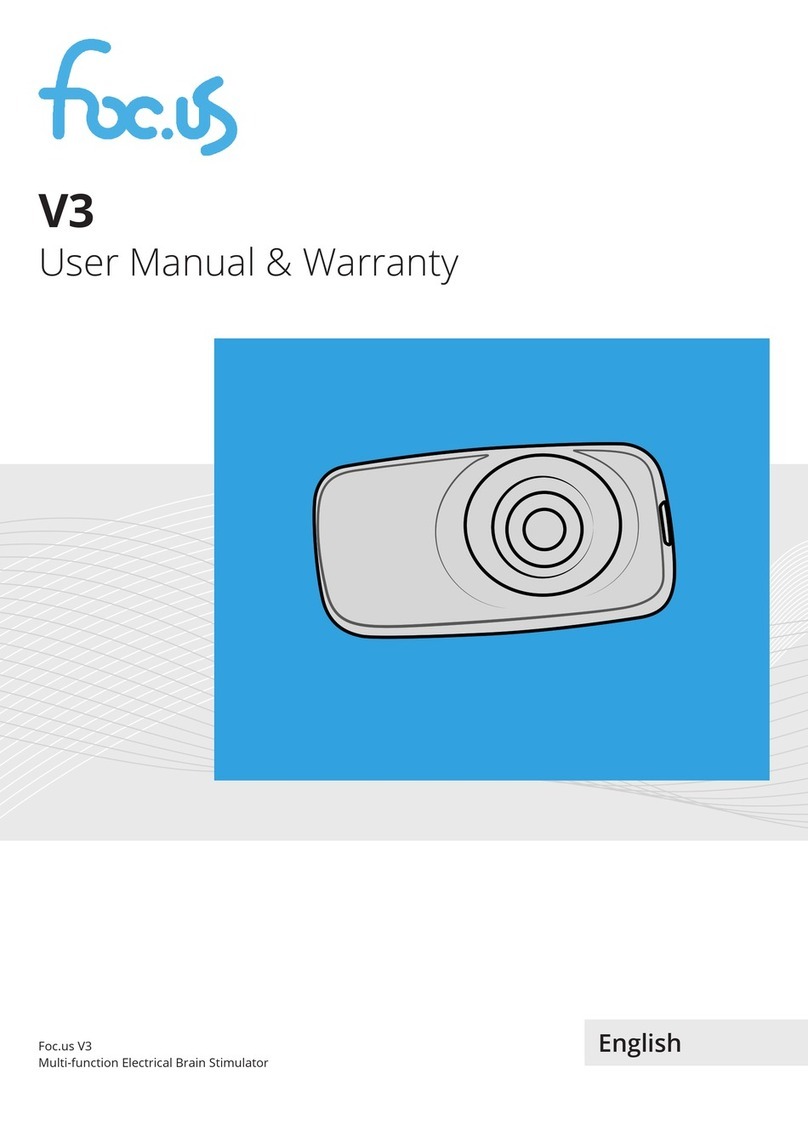
1Introduction
1-6 HeartMate III Left Ventricular Assist System Instructions for Use
The LVAD is surgically connected to the patient's circulatory system via an Inflow Cannula. It is
placed into the left ventricular apex, and an Outflow Graft anastomosed to the ascending aorta.
The LVAD is a centrifugal pump. Ventricular blood is drawn into the Inflow Cannula along a
central axis and is expelled at right angles by, and between, the impeller blades of a Rotor that is
rotating around the central axis. The fluid, thus angularly accelerated, collects and travels around
a volute before it is diffused to the preferred pressure and flow rate by being directed tangentially
into the Outflow Graft.
The Rotor is fully supported by magnetic levitation, obviating mechanical or fluid bearings, and
essentially eliminating Rotor mechanical wear as a reliability factor. Both drive (that is, rotation)
and levitation of the Rotor is accomplished using a single Stator comprising iron pole pieces, a
back-iron, copper coils, and position sensors. By measuring the position of a permanent magnet in
the Rotor, and appropriately controlling the current in the drive and levitation coils, the radial
position and rotational speed of the Rotor is actively controlled. Because of the permanent
magnet's attraction to the iron pole pieces, the rotor passively resists excursion in the axial
direction, whether such excursion is translation or tilting.
The electronics and software necessary to control motor drive and levitation are integrated into the
Pump with the Stator. All of these components, along with the Rotor, comprise the Motor.
The Inflow Cannula is a cylindrical conduit with external size and features similar to those of the
HeartMate II®LVAD. It is rigidly affixed to the Pump Cover. During the implantation procedure, a
Coring Tool is used to resect a plug of myocardium at the left ventricular apex. This allows
insertion of the Inflow Cannula into the left ventricle. An Apical Cuff is sewn to the epicardium,
and a Slide Lock is used to secure the Inflow Cannula and establish hemostasis.
The Outflow Graft assembly consists of a sealed woven polyester graft and the hardware
necessary to attach the graft to the Pump Cover. This hardware is similar to that of the
HeartMate II LVAD, and can be swiveled to correct any twist that may develop during Pump
placement. This type of connection allows the clinician to attach the outflow to the Pump at any
time during the implantation procedure and assists with de-airing of the system. The distal end of
the graft is designed to be cut to the preferred length, and sutured to the ascending aorta by an
end-to-side anastomosis. Only the graft should be cut, not the bend relief. A reinforced tube serves
as a bend relief around the Outflow Graft to prevent kinking and abrasion. The bend relief can be
attached or removed, and reattached during the implantation procedure. If necessary, the Outflow
Graft may be detached from the Pump, permitting Pump replacement without re-anastomosis.
A Pump Cable is permanently attached to the Pump to establish electrical connection with the
enclosed Motor via a hermetically sealed feed-through. This Pump Cable is tunneled through
subdermal abdominal tissue via a Tunneling Tool. It is then exteriorized through a skin wound,
prepared with a Skin Punch, at a location deemed optimal for the patient and his or her
equipment. The Pump Cable extends only a few inches through this site. It is extended with a
Modular Cable, which connects the Pump (through the Pump Cable) to a System Controller.
If necessary, the Modular Cable is readily replaceable without surgery.
When connected, the Pump Cable and Modular Cable comprise the Driveline. The Driveline
contains duplicate sets of three conductors: two for power and ground, and a third for
communication.




















